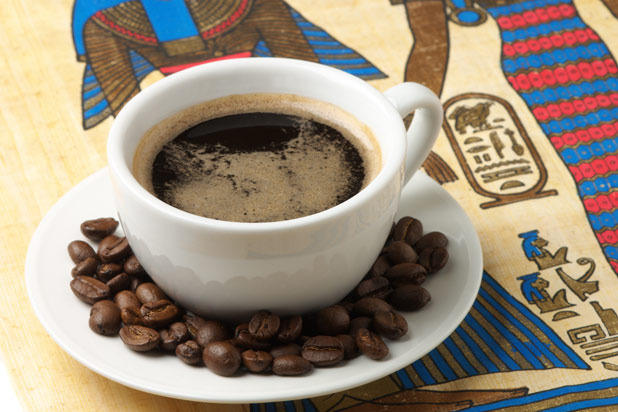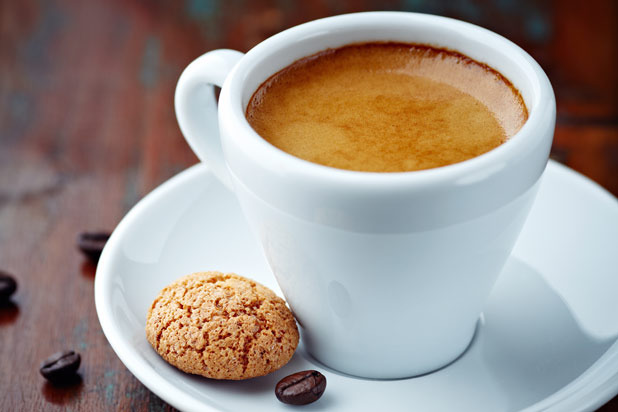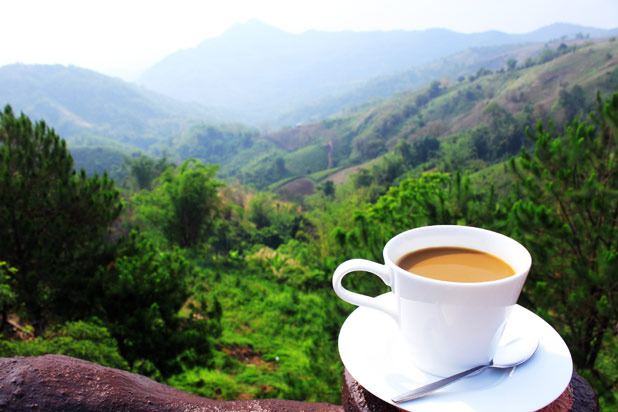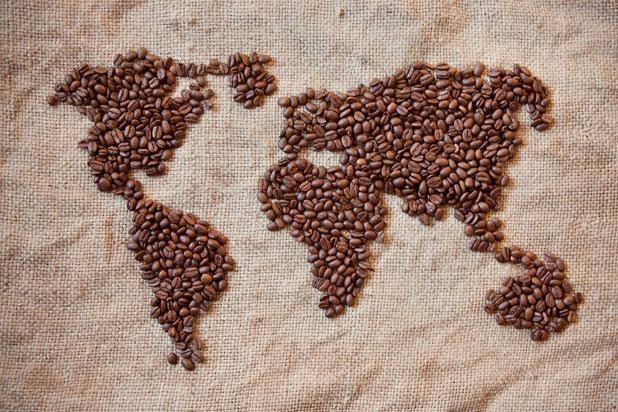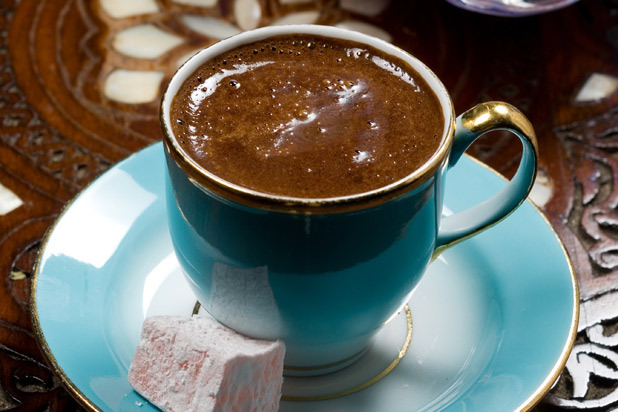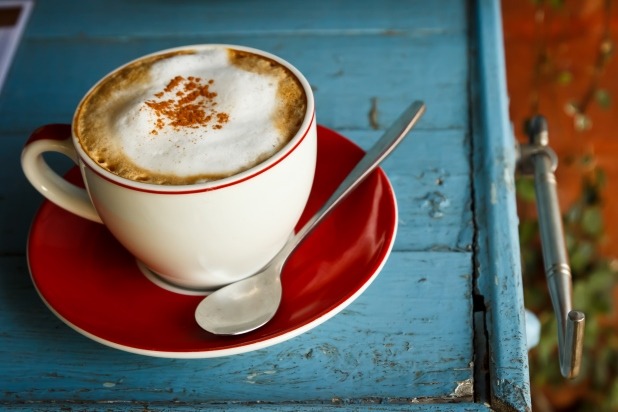Coffee Culture Around The World Slideshow
Crete: 'Ellinikos Kafe'
Greek coffee, known as Ellinikos Kafe, is boiled in a briki, a tall metal container usually made from copper or stainless steel. Similar to Turkish techniques, the brew is often sweetened, and it can be served plain (sketo), medium sweet (metrio) or sweet (glyko). The grounds are always served in the cup and left to settle, so be careful toward the end of the drink!
Egypt: 'Ahwa'
Egyptian coffee, or ahwa, is typically a thick brew where the ground beans are left to settle at the bottom of the serving cup. The best way to drink it is by taking small sips, which also intensifies the rich chocolate flavours of the Arabica beans. It is served black, ahwa sada, with a frothy top in a small decorative pot. Associated with politics in the 17th century, ahwa houses are now aromatic places of relaxation where men meet in the evenings to play tawla, or backgammon, over a hot brew. Discover Egypt and fuel up with a strong coffee in the charming resort town of Hurghada, before enjoying the hustle and bustle of a traditional bazaar.
Italy: Espresso
Espresso originated from Italy, and is an Italian word for fast. High-pressure water is passed through the ground coffee to extract a short, strong espresso with a golden crema on top. Milky coffee, such as cappuccinos and caffe lattes, are only consumed in the morning and never after a meal. Cups of espresso are drunk in the afternoons standing at the bar, as sitting down at a table to drink it can be more expensive.
Jamaica: Blue Mountain coffee
Jamaican Blue Mountain coffee offers a uniquely smooth and exotic flavored bean, grown in the rich soils of the Blue Mountain region. The beans are lightly roasted to preserve the natural taste of Caribbean herbs and spices. In autumn, the annual coffee festival is a chance for local farmers to share their special varieties with the island. Not only that, but Jamaican coffee beans are the well-known flavor base for the liqueur Tia Maria. The Jamaican coffee cocktail is made with Tia Maria, Jamaica rum, vanilla, and sugar.
Malta: 'Kafe Msajjar'
Traditional Maltese coffee, known as Kafe Msajjar, is a spiced blend that is slowly brewed in a coffee kettle, or stanjata, and served black. It's a rich combination of Arabica and Robusta coffee beans, infused with roasted chicory, cloves, orange zest and ground aniseed for a complex taste. If you want to sample authentic Maltese Kafe Msajjar, then visit the café Prego in Valetta, Malta, to soak up the rich history and admire the Baroque-style architecture. Prego is a charming family-run café, which has been going strong since 1947.
Turkey:' Türk Kahvesi'
Turkish coffee is ground very finely, sometimes with cardamom pods and heated in a small pot known as an ibrik or cezve. Sugar is added during the brewing process to sweeten, and the end result is thick, molten, and intensely strong with a frothy top. It is often dubbed a rough version of the espresso and is normally served black, in an elegant little cup and saucer with pieces of rosewater-flavored Turkish delight on the side. In Turkish culture, the eldest person is always served coffee first as a sign of respect, and fortunetelling with the leftover coffee grains is a popular pastime.
Australia: Flat White
Australia is best known for its flat whites, a coffee drink that was developed in the 1980s. Less milky and foamy than a latte, it's a double shot of ristretto espresso (espresso made with less water, for a stronger flavor) and folded-in milk and served in a cappuccino glass. Now, you can find a flat white just about anywhere, including coffee shops in New York and London. (And yes, even the Australian Starbucks serve them.)
Ethiopia: 'Buna'
In Ethiopia, the phrase "Buna dabo naw" translates to "coffee is our bread," an explanation of how coffee is perceived in Ethiopian culture. Coffee ceremonies in Ethiopia represent friendship and hospitality — and are a beautiful sight to see. In a coffee ceremony, the hostess washes, roasts, and grinds the coffee beans in a mortar and pestle; then, she mixes the ground beans with spices in a jebena, a clay pot that lets the grounds strain to the bottom while it brews. Then, she will pour the buna (coffee) into small cups, called cini, to serve to patiently waiting guests. Buna is served with sugar, but never milk.
Brazil: 'Café Com Leite'
The café com leite is the closest thing to a café au lait or caffe latte. This is a coffee that's more milk than coffee, and a barman in Brazil will often fill your cup with hot milk first until you say "stop," and then add in your filtered coffee or espresso. If you want less milk, ask for a café pingado; if you want your café com leite without sugar, ask for a café com leite sem açúcar.

